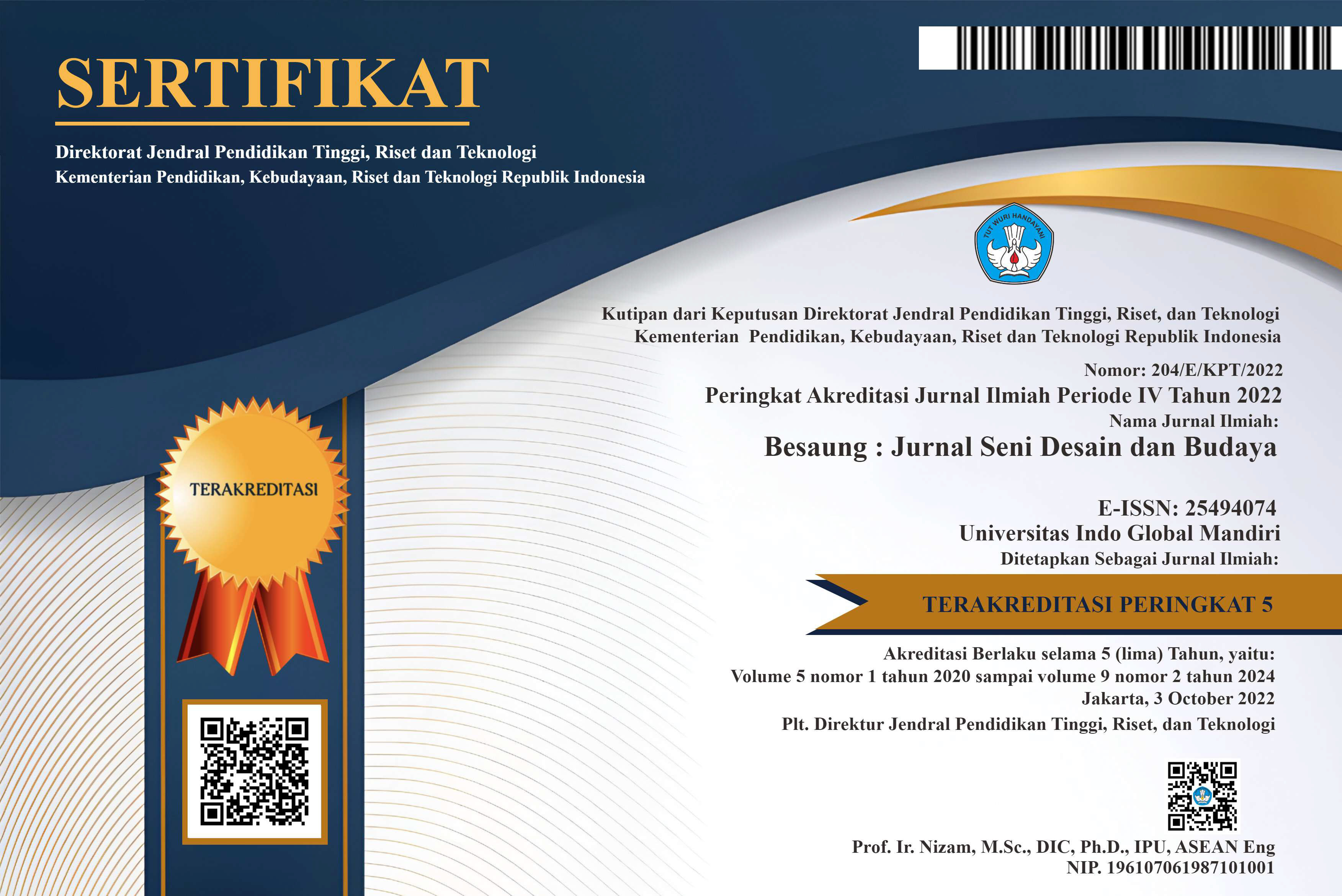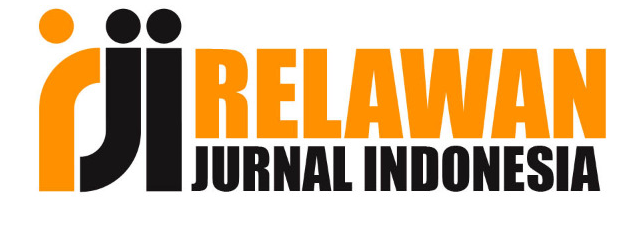Bentuk Penyajian Kesenian Senjang dalam Konteks Acara Seremonial di Kota Sekayu
DOI:
https://doi.org/10.36982/jsdb.v5i2.1446Abstract
This research is a descriptive study of the phenomenon of Senjang art performance in the context of ceremonial events in the community of Sekayu city. This study used a qualitative approach, with data collection carried out by observation, interviews, and documentation, and data presentation techniques in the form of analytical descriptive writing. The results of this study are in the form of descriptions of the development of Senjang art in the city of Sekayu, and textual descriptions of the presentation of Senjang performances which include; the composition of the presentation of Senjang art, aspects of Senjang literary text, transcription of vocal music melodies, transcription of the main melody form of the musical instruments of Senjang, aspects of the players, the audience, and the place of the performance. Senjang is one of the traditional arts that has developed in Musi Banyuasin district, especially the city of Sekayu. Senjang is an oral literature of the type of pantun and talibun which in its presentation is combined with music and dance. This art has been inherited from generation to generation for a long time by the Musi Banyuasin community, especially the city of Sekayu. Senjang art initially only developed in Sungai Keruh sub-district, but over time this art began to develop in other areas around it, including in Babat Toman sub-district, Sanga Desa sub-district, and Sekayu district. In terms of the performance, Senjang is presented by telling rhymes spontaneously either singly (one person) or spoken by two people (usually in pairs) in an integrated manner, and accompanied by music. The accompaniment music in Senjang presentation usually uses a single organ, and there are some who use a single guitar, with the playing of short melodies that are repeated. In its presentation, the Senjang vocal music speech with accompanying musical instruments is not played simultaneously, but is played alternately.References
Apriadi, B., & Chairunisa, E. D. (2018). Senjang: Sejarah Tradisi Lisan Masyarakat Musi Banyuasin. Kalpataru Jurnal Sejarah dan Pembelajaran Sejarah, 4(2), 124-128. Djelantik, A.A.M. 1999. Estetika sebuah pengantar. Bandung Masyarakat Seni Indonesia. Gaffar, Zainal Abidin. 1989. Struktur Sastra Lisan Musi. Jakarta: Depdikbud.
Moleong, Lexy J. 2011. Metodologi Penelitian Kualitatif. Cet:24. Bandung: Remaja Rosdakarya. Sukma, Irawan, 2015. Keberadaan Kesenian Senjang Pada Masyarakat Kabupaten Musi Banyuasin Sumatera Selatan.. Tesis. Institut Seni Indonesia Surakarta.
https://kbbi.web.id/. Diakses tanggal 09/01/2020
Downloads
Published
Issue
Section
License
This work is licensed under a Creative Commons Attribution-NonCommercial-ShareAlike 4.0 International License.













